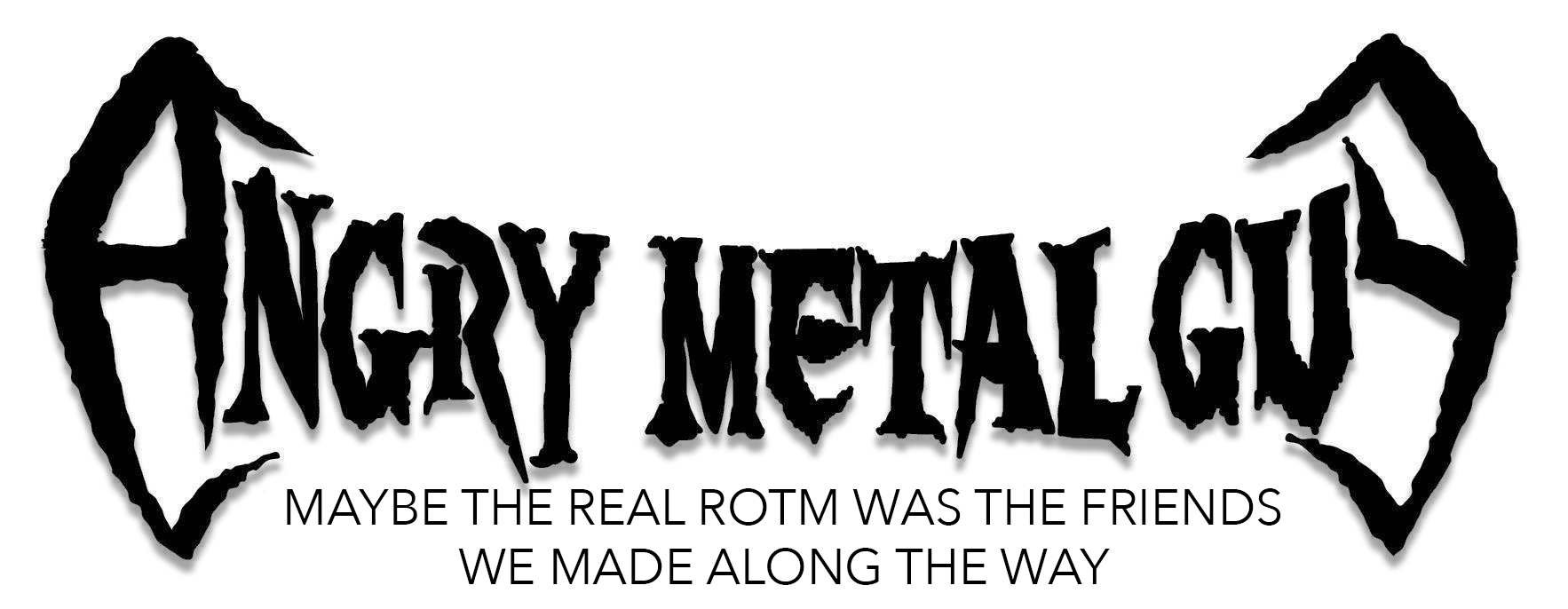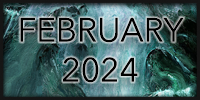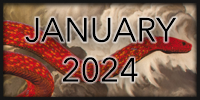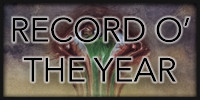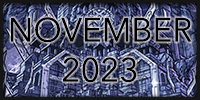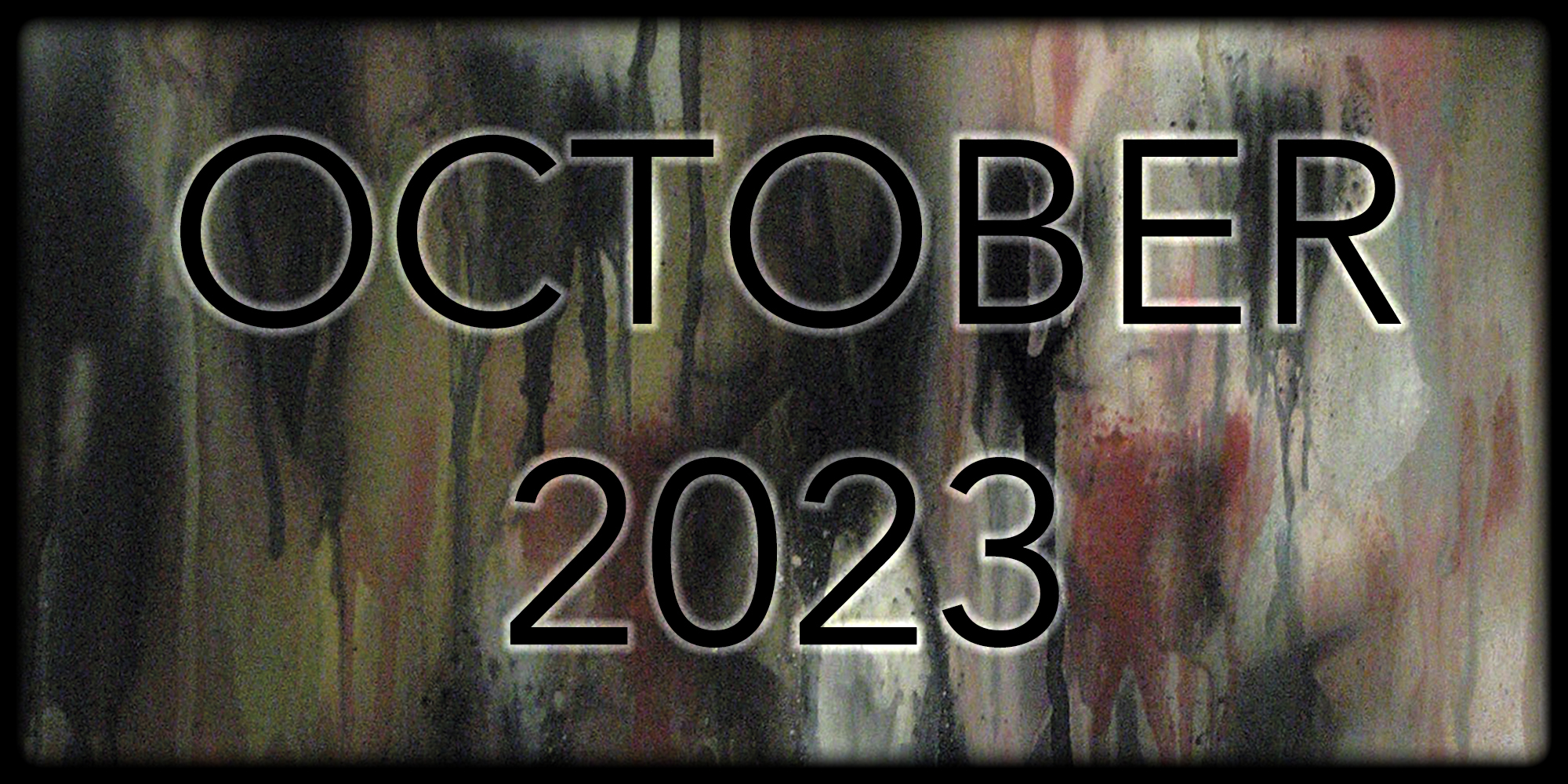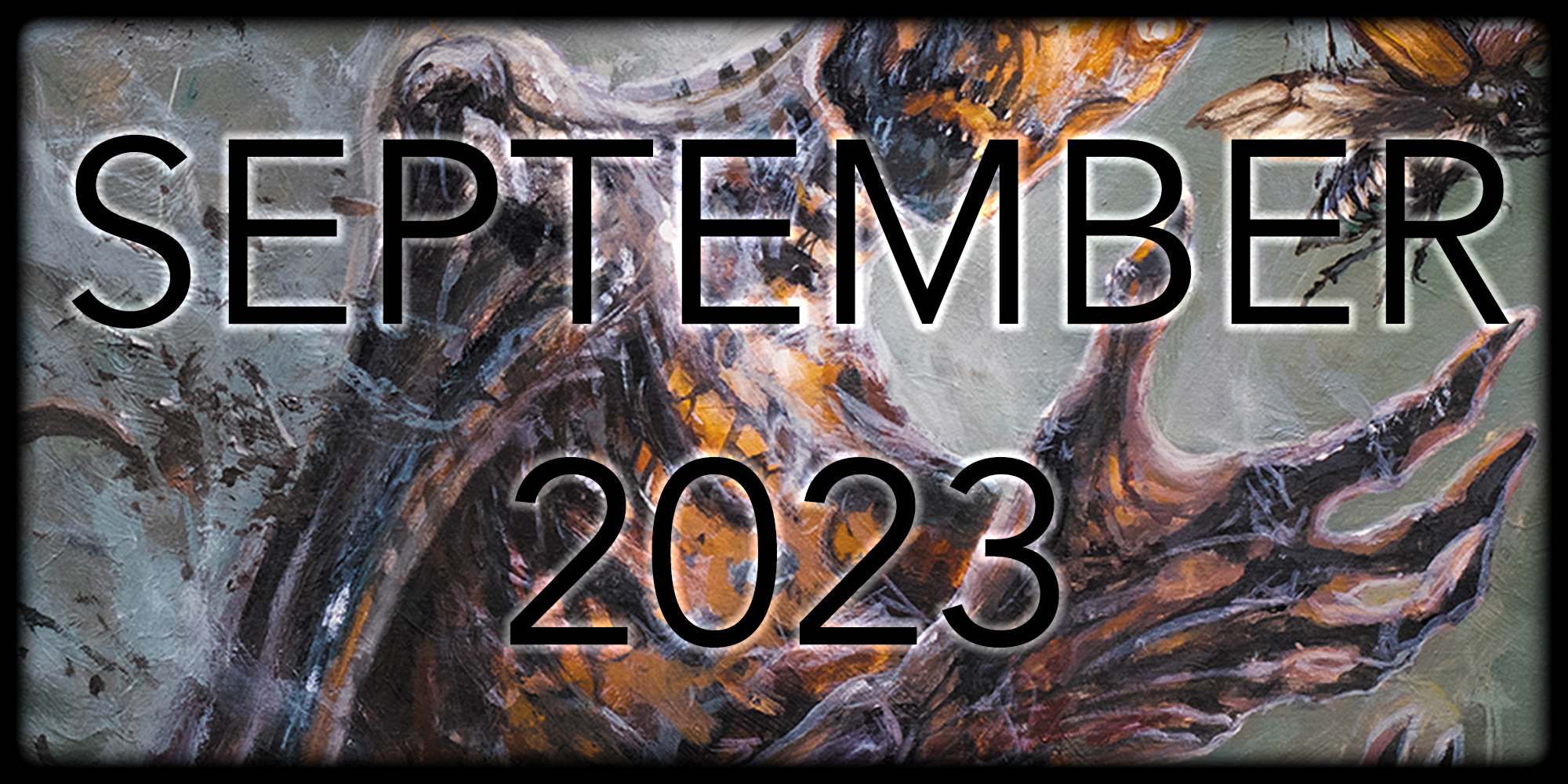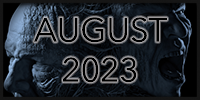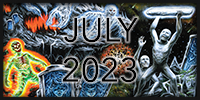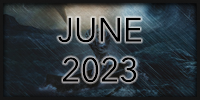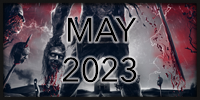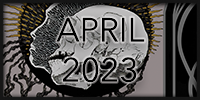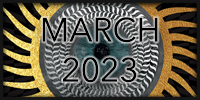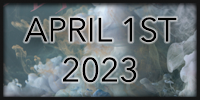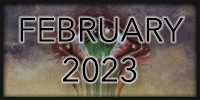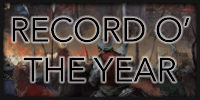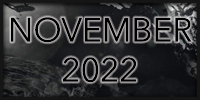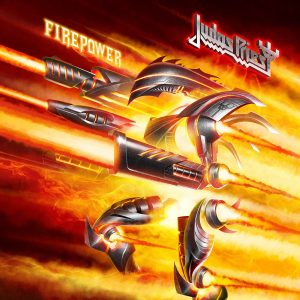 On March 9th, Judas Priest will release their 18th album, Firepower. This makes it the ideal time to take a long wistful look back over their historic catalog and rank their albums from worst to first according to the esteemed tastes of me, Lord Protector Steel. Along with Black Sabbath, Judas Priest was my gateway band into metaldom and they were my favorite act for a goodly portion of my teen years. I’ve followed them through the dizzying highs and crushing lows that made up their decades-long career, and I’m still lurking around the periphery though I’m nearing 50 years of age (that’s 500 in Viking gorilla years). History with a band is one thing, a band’s history is quite another, so let us dig through the dusty decades of metal together, shall we?
On March 9th, Judas Priest will release their 18th album, Firepower. This makes it the ideal time to take a long wistful look back over their historic catalog and rank their albums from worst to first according to the esteemed tastes of me, Lord Protector Steel. Along with Black Sabbath, Judas Priest was my gateway band into metaldom and they were my favorite act for a goodly portion of my teen years. I’ve followed them through the dizzying highs and crushing lows that made up their decades-long career, and I’m still lurking around the periphery though I’m nearing 50 years of age (that’s 500 in Viking gorilla years). History with a band is one thing, a band’s history is quite another, so let us dig through the dusty decades of metal together, shall we?
We’ve scraped the bottom of the Judas Priest barrel here, and now it’s time to dig down and expose the next few layers of their storied career. The technical term for the strata we will now plumb is the “Bad with Some Good,” which is followed closely by the “Good with Some Bad.” Brushes out, headphones on, and…excavate!
#13. Redeemer of Souls (2014) – I was admittedly quite hard on this album when it first dropped, and it was a painful reckoning for a lifelong Priest fan like me. The flaws are undeniable though. Let’s focus on the good first: Judas Priest went out and tried to record a late career metal album with some balls that also paid tribute to their blues rock roots. They accomplished that, and there are a few respectable cuts, like “Halls of Valhalla,” which has real energy, intensity, and sounds great live. Both “Dragonaut” and “Battle Cry” show the band can still reach back to their Painkiller glory days and when the mood strikes and make it work.
“Sword of Damocles” is particularly interesting because it sounds like Iron Maiden wrote it during their A Matter of Life and Death sessions. Even “Crossfire” is pretty nifty; a blues rocking biker bar tune you can swig moonshine to with gusto. Rob Halford showed he could still deliver, and sounds especially sharp on the ballads and bluesy numbers. His range has noticeably diminished, even compared to the Angel of Retribution sessions, but when he stays in his mid-range comfort zone he still has the swagger and gravitas of old.
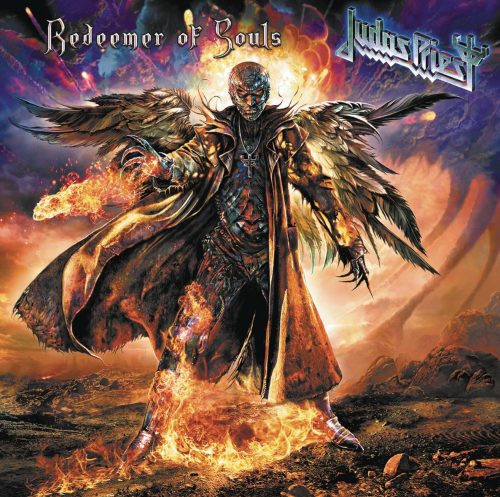
Ultimately though, everything is contextual, and where an unknown retro band might draw decent marks for this platter, we all just expect a little more from legends. And if we’re being honest and not fanboying, about half of this album is either weak or filler. There’s no atrocity here, but there are 4-5 songs that just can’t row the boat. Even some of the more aggressive moments like “Metalizer” feel washed out and phoned in. All this is especially irritating given the album’s length, which clocks in at over an hour. Why they would opt for that length when they had about 25-30 minutes of decent material? It’s a mystery to this scribe.
Redeemer of Souls sounds like a less urgent, accomplished version of Angel of Retribution, which wasn’t exactly a classic either. There are some good moments, but no classics or essential pieces to their catalog, and too many cuts simply don’t impress or demand replay. As great as it is to hear Rob and Glenn doing their metal thang, it’s more of a downer when the end product isn’t something you can go back to much after the initial few spins. Redeemer of Souls is such an album, and I very rarely go back to it.
#12. Angel of Retribution (2005) – When it was announced the Ripper experiment was over and Lord Halford was returning to Judas Priest, the metal world cheered and drank inapproriate amounts of beer. Naturally, expectations for the next album went through the roof and the wait for output from the reformed band was interminable. When Angel of Retribution finally hit the streets, I was quite satisfied with how heavy and energetic the material sounded. After the audio hell that was Demolition, it was a breath of fresh air to hear opener “Judas Rising” blast forth like the unholy offspring of Painkiller and Defenders of the Faith. The prodigal son, Halford sounded ageless and powerful, the music was crackling with energy and everything felt right again in the metalverse.
And surprise, surprise, the album’s first half is stocked with quality examples of a revitalized band doing what they do best. “Deal With the Devil” sounds like something from Halford’s solo albums like Resurrection or Crucible, and it rocks quite hard. “Revolution” and “Worth Fighting For” both more than hold their own, and later cut “Hellrider” is nearly good enough to crack the top ten of their catalog. “Hellrider” is especially tasty and interesting because it sounds like something written between the Sin After Sin and Stained Class albums and stored away until 2005. It has that same old timey power and glory and it’s quite a little gem.
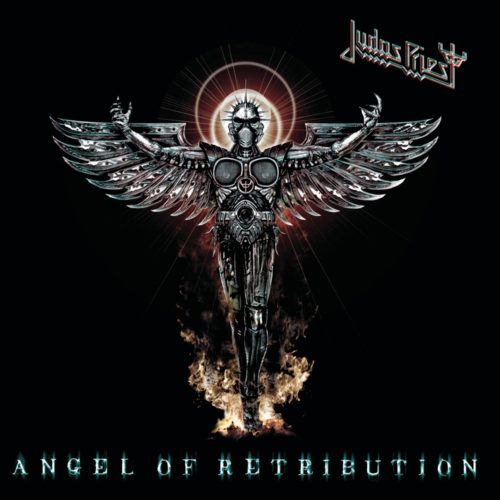
As good as the first half is, there are some stumbles and fumbles on the back-end that hurt the album. “Wheels of Fire” is pedestrian, and the addition of 2 ballads, “Angel” and “Eulogy,” so close together was an odd choice. Neither are awful, nor are they essential and together they kill the album’s momentum. The biggest misstep is the ginmorous closer “Lochness,” which clocks in at a whopping 13 and a half minutes. It’s not a terrible song per se, but the ideas presented don’t justify the extended runtime and things get very repetitious before it’s over.
Angel of Retribution delivers half a really good album, and a bunch of quasi-filler. It showed Priest still had fire in them, but they were suffering consistency issues. Unfortunately, it seems it also caused the band to fall in love with the long-form song format, opting to record a mammoth double album as the followup, and we know how that went.
#11. Turbo (1986) – Here it is: Their dreaded sell out album. Priest’s dirty little secret. The cock rocking, hair metal teasing, teenage party album for those who weren’t quite ready for real metal in 1986. Consider it Priest’s gateway material, crafted to lure a generation of unsuspecting innocents into the dark, dingy world of metal. Call it Pennywise-core or complete pablum, it’s undeniably the bubble gum era of the legendary band. It never ceases to amaze me that the band thought this was the logical evolution from the balls and brawn of Screaming for Vengeance and Defenders of the Faith. As a pre-existing hardcore fan of the band, I was quite bewildered and embarrassed by this stunning reversal, and it put me in the awkward position of defending Turbo’s glam rock to my neer-do-well hair metal friends. “No, this isn’t like Winger!” I cried. “Yes, it’s heavier than Ratt!” I implored. Such was the life of a Priest fan circa 1986.
But when left on my own with the album, it began to grow on me like Greyscale. The infectious idiocy of “Turbo Lover” crept into my bloodstream, softening me up for nuggets like “Locked In” and God help me, “Private Property.” Soon I came to accept though this was not the Harley and axle grease metal I expected, it actually features a solid collection of catchy cuts capable of overcoming the cock rocky commercialism and humiliating spectacle of middle-age men worshiping glam imagery. “Out in the Cold” is one of the best power ballads the band every penned, and it made for a sensational opener on the Turbo tour. “Rock You All Around the World” is cheesy as all get out, but it’s a fun song, and “Hot for Love” is far better than the title would lead you to expect.
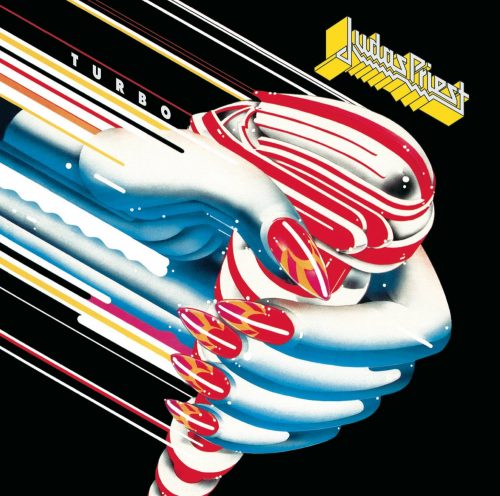
The best and most enduring track to me is closer, “Reckless,” which is the quintessential Priest song, and I’ve always suspected it was left over from the Defenders writing sessions, as it sounds far more like that era than the kiddie metal here. The riffing carries that larger-than-life vibe Priest excelled at, and Rob knocks it out of the park with a spot on delivery, especially on the chorus. It’s a simple song that carries a lot of power and poise, and it sticks in your head forever.
So what’s the actual damage here? Surprisingly little. “Parental Guidance” is a cringe-worthy anthem for rebellious teens that I didn’t get behind even as a rebellious teen, and that chorus should be encased in titanium and dropped in a volcano, never to be heard again. “Wild Nights, Hot & Crazy Days” is not as bad as the title suggests, but the Haggar-era Van Halen chorus is not a good fit. The most divisive element on the album is the extensive use of synthesizer pedals on the guitars to give the material what the band hoped would be a futuristic, cutting edge sound. I suppose it was cutting edge, but it was futuristic like a 70s sci-fi flick you watch in 2018, and it started sounding dated shortly after release. The synthesizer sound sucks the blood out of the band’s trademark guitar harmonies and neuters the impact of what are still very guitar-driven compositions.
After the powerhouse metal of Defenders of the Faith, Turbo was like a slap in the face with a wet mackerel (smackerel in industry speak). It would be their Cold Lake except it was way too much fun to drink to and cruise around in the summer blasting out of car speakers. Those synthesized guitars were atrocious, but the writing was not, and thus Turbo was saved from the scrap bin of metal history.
#10. Point of Entry (1980) – Of all the album’s in Priest’s long discography, it’s Point of Entry that was the most difficult to place in the rankings. It’s an odd duck in a fairly linear career and stands apart even more than Turbo or Nostradamus. Coming off the uber-metal powerhouse, British Steel, the band cryptically decided to switch gears entirely for a kind of straight-forward hard rock album more in line with Nazareth than their own catalog. The decision was probably motivated by a desire to get more radio play or reach a wider audience, but considering how well British Steel had done, it was a risky, strange choice to make.
Many people hate this album with a burning intensity, which I never fully understood. It’s like the band wanted to create the perfect road trip album, and they nearly did. The metallic ferocity of songs like British Steel’s “Rapid Fire” is replaced by simple, mid-tempo rock riffs, an increased emphasis on catchy choruses and a noticeably “live” feel to the recording. Is that the recipe for a sell out? Not quite. The sound is still edgy and guitar-oriented, with enough grit to offset the catchier writing. And there are definitely some stone cold classic cuts here. “Heading Out to the Highway” is a great goddamn song, whether you choose to call it metal or rock, and it would go in my top ten of all time Priest songs. “Desert Plains” is another killer, with a sublime blend of aggression and melancholy. It’s one of those songs that gets to you early and ages like fine wine in the succeeding years.
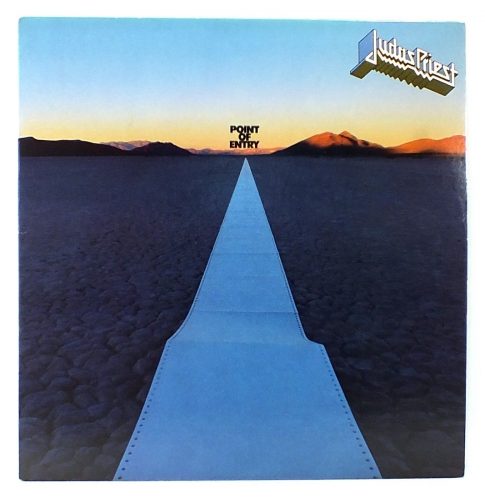 Then there are the deep cuts. “Solar Angels” is a proggy, oddball tune, sounding almost like The Smiths tried to write a hard rock song. It quickly became one of my favorite Priest songs and it has an spacey, epic feel that’s hard to describe. “Turning Circles” is a slow, brooding number with an anthemic undercurrent crackling below the surface. It’s the kind of song tailor-made for long drives when the mind turns introspective, and the minimalist guitar-work paired with Rob’s edgy vocals work wonders. Album closer “On The Run” is another buried treasure, rowdy and laser-focused on sticking in your head.
Then there are the deep cuts. “Solar Angels” is a proggy, oddball tune, sounding almost like The Smiths tried to write a hard rock song. It quickly became one of my favorite Priest songs and it has an spacey, epic feel that’s hard to describe. “Turning Circles” is a slow, brooding number with an anthemic undercurrent crackling below the surface. It’s the kind of song tailor-made for long drives when the mind turns introspective, and the minimalist guitar-work paired with Rob’s edgy vocals work wonders. Album closer “On The Run” is another buried treasure, rowdy and laser-focused on sticking in your head.
Of course, if everything was a hit, Point of Entry would find itself further down the list, and there are some serious missteps. “Hot Rockin'” is about as lamebrained as a rock song can be, with a painfully awkward chorus. I think it was intended to be the brother tune to “Living After midnight” but yeah, it’s bad. The album’s second half is also definitely less stellar as a whole. “You Say Yes” is annoying, with its stutter-step tempo and Rob’s breathless, stammering delivery combining to create an unpleasant tune that feels way out of character for Priest, even on an out-of-character album like this. Back-end ditties like “All The Way” and Troubleshooter” aren’t bad at all, but neither are they essential listening.
Point of Entry exists on an island in the Priest catalog, as they quickly shifted back to full metal mode on followup Screaming for Vengeance. This is a strange little platter, and one that gets massively overshadowed by the much bigger albums it sits between. Still, there’s some very good stuff here, and if you approach it as a fun hard rock album, you may get more than you expect from it.
Editor’s Note: I might as well mention now, Unleashed in the East is not up for consideration in this here ranking feature as it was a live album (and yes, I know it had studio overdubs, but still). Send all concerns and complaints to our Spanish-language copycat sites.
